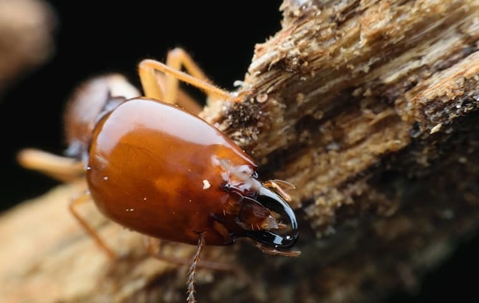Termites can become the origin of some major problems in homes and around properties, causing extensive damage and significant financial losses. Implementing constructive termite control is crucial to protecting your investment in Phoenix. With the prevalence of these destructive pests, it's imperative to stay informed about the latest techniques for eradicating and preventing termite infestations.
In this comprehensive guide, we'll explore the most successful strategies employed by leading experts in Phoenix pest control. From learning ways to identify termites to discussing helpful prevention methods, we'll delve into proven ways to ensure your property remains termite-free.
Don't let termites compromise the integrity of your home—arm yourself with the knowledge to combat them head-on. Let's get started.
How To Identify Termites: Types, Behaviors, And Warning Signs
Termite identification is the first step in detecting and preventing these destructive pests from infesting your home. Understanding their types, behaviors, and warning signs empowers you to take prompt action. Here's what you need to know:
Types of Termites:
- Subterranean termites live in the soil and build mud tubes to access wood.
- Drywood termites infest dry wood structures and do not require contact with the soil.
- Dampwood termites thrive in damp, decaying wood.
However, it should be noted that in our region, subterranean termites are the most common (and thus most threatening) species found infesting wood in Phoenix homes.
Termite Behavior:
- They live in colonies with specific roles—workers, soldiers, and reproductive termites.
- They feed on cellulose found in wood, paper, and plants.
- They construct intricate tunnels and mud tubes for protection and moisture.
Warning Signs of Termites in Your Home:
- You may find discarded wings near windows or light sources.
- You see mud tubes along walls or foundations.
- You find small, pinpoint holes in drywall or wallpaper.
- You see an accumulation of termite droppings resembling sawdust, wood damage, or hollow-sounding wood.
Familiarizing yourself with termite identification and recognizing signs of termites in your home early on can help you address the infestation and perhaps save you from extensive damage.
Understanding The Termite Threat: Why Termites Infest Homes
If you're dealing with a termite problem in your home, understanding the factors behind their infestation is essential. Termites gravitate to residential properties for several reasons.
To start, termites require a constant food source, and homes provide ample opportunities. They feast on cellulose-rich materials like wood, commonly found in structures and furnishings.
Secondly, termites thrive in moist environments. Moisture attracts them and allows them to survive and reproduce. Leaky pipes, poor ventilation, or high humidity levels can create the ideal conditions for termites to infest your home.
Lastly, termites exploit access points. Small cracks, gaps, or even tiny openings in foundations or structures serve as entryways for these relentless pests.
Understanding these underlying factors can help you take proactive measures to prevent and address termite infestations.
Protecting Your Property: Effective Termite Prevention Methods
When it comes to protecting your property from active termites, prevention is also an important factor. By implementing some helpful prevention methods, you can reduce the likelihood of an infestation and protect your home. Consider the following strategies:
- Moisture Control: Address any moisture issues promptly. Fix leaks, improve ventilation, and ensure proper drainage around your property to eliminate attractive environments for termites.
- Regular Inspections: Schedule regular termite inspections by professionals to detect early signs of infestation or vulnerability. Finding an infestation early on can help minimize the damage to your home and the overhead cost of repairs.
- Wood Treatment: Apply termite-resistant treatments to wooden structures, including framing, furniture, and fences. These treatments add an extra layer of protection against termite attacks.
- Barrier Protection: Install physical or chemical barriers around the perimeter of your property to deter termites. These barriers can include termite-resistant building materials, such as treated lumber, and chemical soil treatments.
- Debris Removal: Clear away any dead wood, tree stumps, or debris near your property. These can serve as attractive food sources and nesting areas for termites.
Being proactive with these termite prevention methods can help you save your home. Don't skip out on them!
Professional Termite Control: Long-Term Protection For Your Home
To ensure long-term protection for your home against termites, rely on the expertise of professionals. At Protection Termite Control, a trusted termite control company, we offer comprehensive solutions geared to your home and termite needs.
Our experienced pest professionals use advanced techniques and state-of-the-art equipment to identify, eliminate, and prevent termite infestations. With our in-depth knowledge of termite behavior and effective treatment options, Protection Termite Control provides a thorough and lasting defense for your home.
By partnering with us, you can rest knowing that your property is in capable hands and proactive measures are taken to safeguard it from the devastating effects of termites. If you're facing a termite problem, don't wait; call today.

